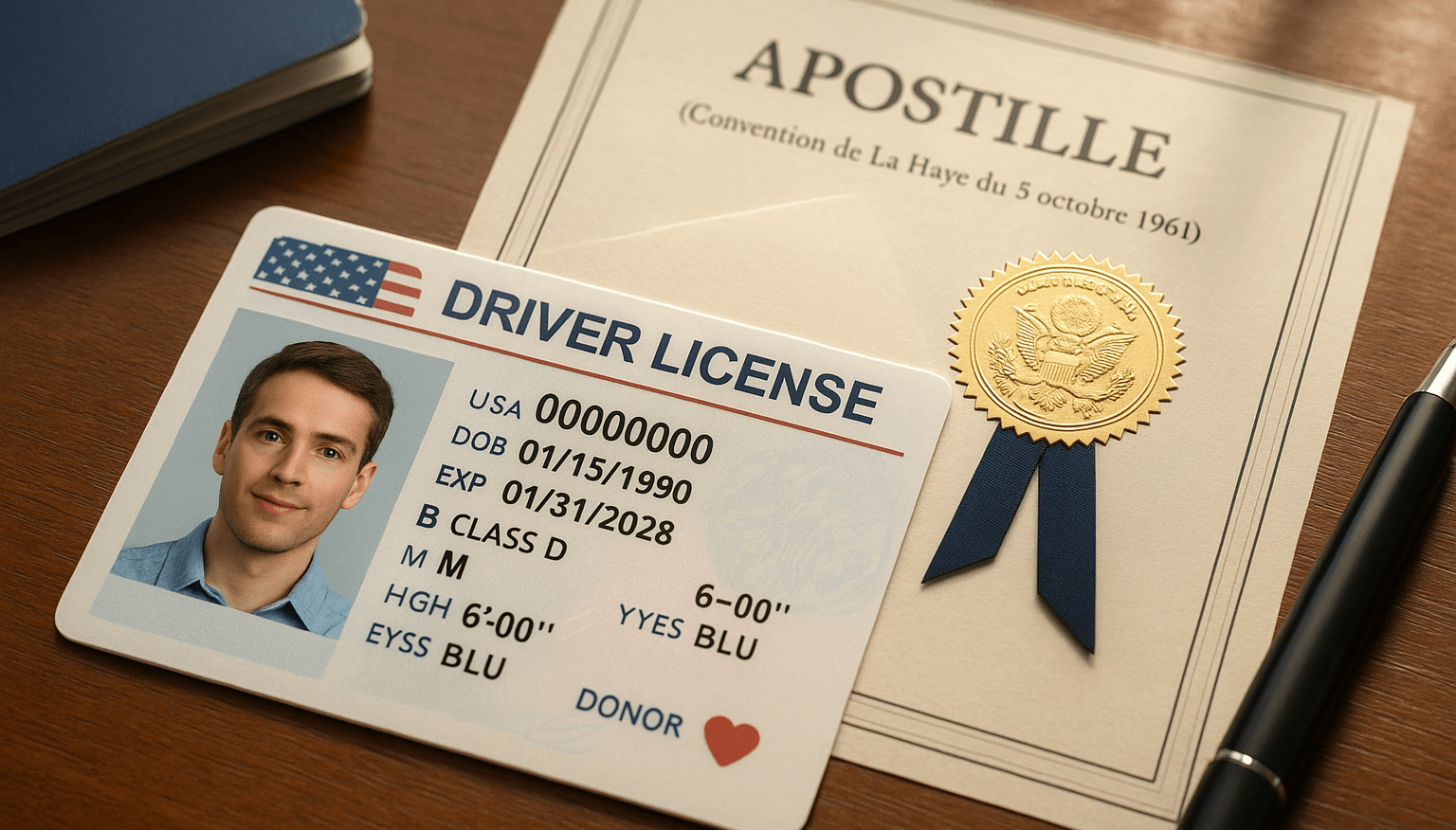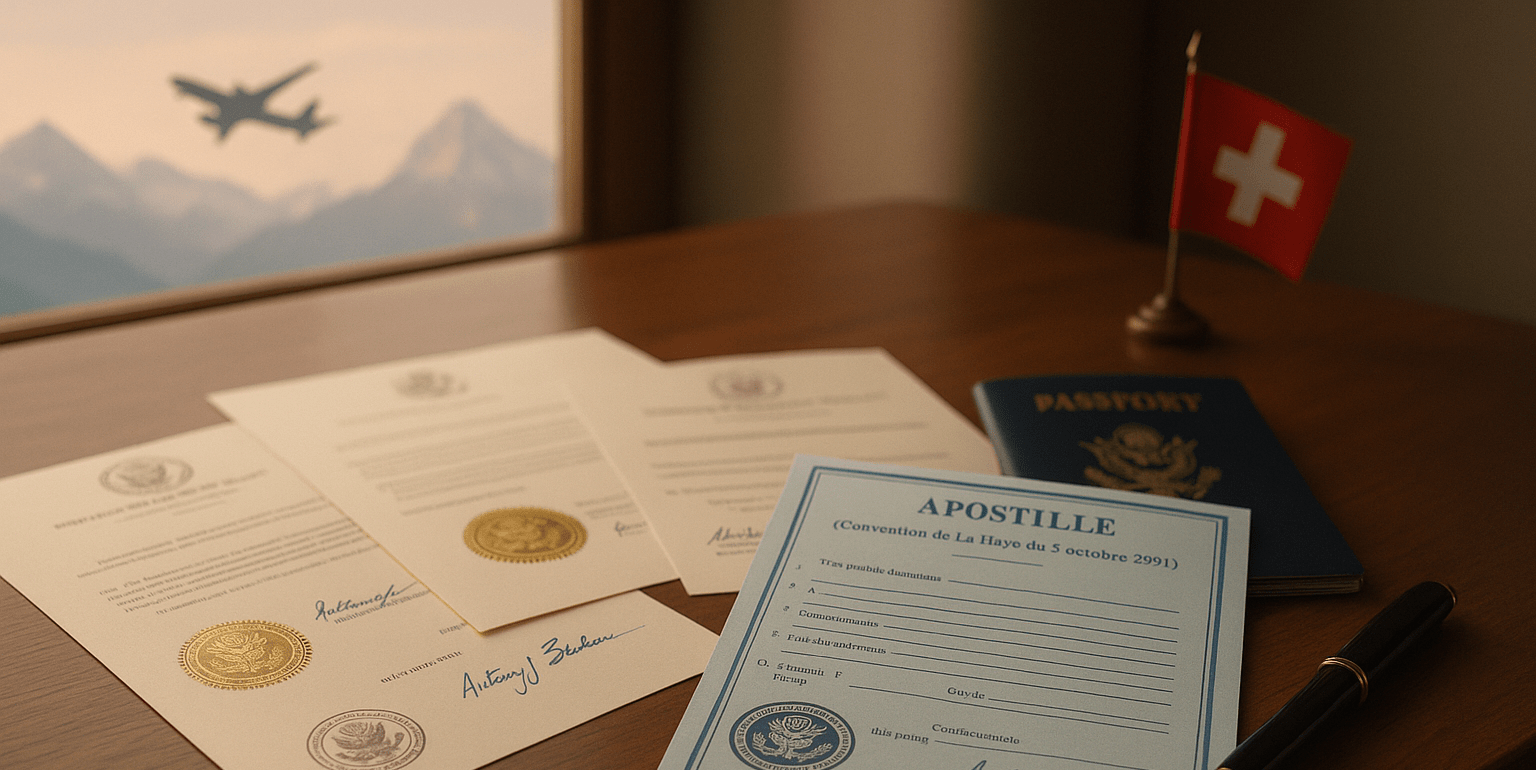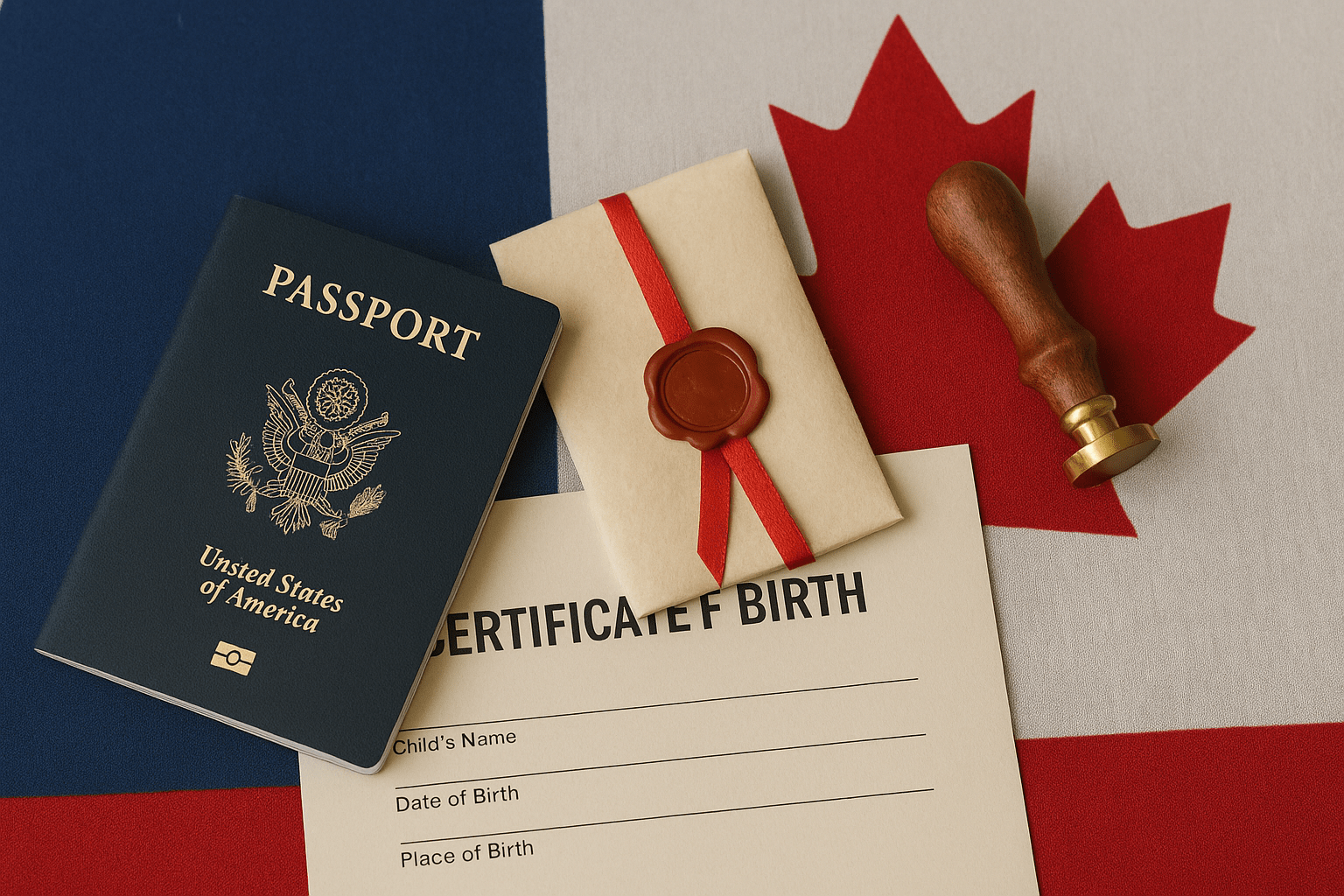
Apostille for Patent and Trademark Documents
Expanding your business internationally or protecting your inventions overseas often requires proving that your intellectual property is legitimate. That’s where an intellectual property apostille comes in. This process confirms that your patents or trademarks are genuine, properly issued, and recognized across borders under the Hague Apostille Convention.
In this blog, we’ll explain why your IP documents may need an apostille, which ones are eligible, how to get them authenticated, and what to expect during the process.
Why Patents or Trademarks Need an Apostille
When you plan to use a U.S. patent or trademark abroad, most foreign authorities require proof that the document is official. An apostille for patent documents certifies that the signature and seal on the document are valid under U.S. law.
Moreover, countries that are part of the Hague Apostille Convention accept this certificate as the only required form of legalization. Without it, your paperwork may be rejected or require additional embassy steps. In the end, getting an apostille helps your patent or trademark stand as legally valid in another country.
Types of IP Documents Eligible
Many forms of intellectual property paperwork can be apostilled. However, the document must first be certified or issued by a U.S. authority such as the United States Patent and Trademark Office (USPTO).
Below are the main types of documents that qualify for an apostille for patents and trademarks.
Patent Certificates and Grants
Patent certificates confirm that your invention has been officially approved by the USPTO. To be eligible for an apostille for patent documents, these certificates must be original or certified copies issued by the agency.
Other related paperwork, like assignments or declarations of ownership, can also be included if they carry an official signature and seal. Always make sure the patent document is printed on USPTO letterhead and signed by an authorized officer.
Trademark Registration and Renewals
Trademark registrations, renewals, and ownership transfers are among the most common documents that require an apostille for trademark documents. These prove that your brand name, logo, or slogan is officially recognized in the United States.
If you plan to license or enforce your trademark abroad, an apostilled registration ensures that it’s accepted by foreign authorities without extra authentication.
Supporting and Ancillary Documents
Supporting paperwork, such as patent assignments, powers of attorney, or corporate resolutions, may also need an apostille for IP documents when tied to your intellectual property.
For instance, if a company authorizes an agent to represent it in a foreign patent filing, the power of attorney must be notarized and apostilled before submission. Similarly, corporate board resolutions confirming ownership or licensing rights often require apostille verification to be valid overseas.
When You May Need an Apostilled IP Document
There are several occasions where a patent and trademark apostille becomes necessary. If you’re expanding operations, entering partnerships, or filing for protection abroad, you’ll likely need apostilled documentation to prove authenticity.
For example, when filing abroad to claim priority rights under international treaties, licensing your IP across borders, or defending against infringement, apostilled documents serve as official proof. Moreover, they’re often required during mergers, acquisitions, or joint ventures involving intellectual property.
You might also need them when submitting entries to international exhibitions, patent tenders, or investor applications.
Step-by-Step Apostille Process
The process of obtaining an apostille for patents and trademarks may seem complicated, but it’s quite manageable once you know the steps. Below is a clear breakdown from document preparation to delivery.
Pre-Requirements and Document Review
Start by ensuring your patent or trademark paperwork meets apostille eligibility standards. The document must be an original or a certified copy from the USPTO. Before submission, check for readable signatures, titles, and seals.
It’s also smart to verify that the document’s issue date matches what’s required by the receiving country. A missing signature or smudged seal could cause rejection, delaying the patent and trademark apostille process.
Notarization or Certification Prerequisites
In some cases, notarization is needed before requesting the apostille. For example, if you’re submitting a power of attorney or assignment, it must first be notarized by a licensed notary public. Only then can it proceed to the next step for apostille for patent documents or related IP papers.
Federal documents, like those issued by the USPTO, typically don’t need state-level notarization. However, always double-check with the U.S. Department of State or your chosen apostille service to confirm requirements.
Submission to the Issuing Authority
Once your paperwork is ready, submit it to the correct authority. For most federal IP records, that’s the U.S. Department of State in Washington, D.C. They verify the authenticity of the signature and seal on your document before issuing an intellectual property apostille.
You can submit documents in person, by mail, or through a licensed third-party courier. Using a professional service often reduces errors and speeds up the timeline.
Apostille Issuance and Attachment
After review, the U.S. Department of State attaches a physical apostille certificate to your original patent or trademark record. This official page includes a unique number, signature, and seal confirming that the document is genuine.
Once attached, this certificate makes your apostille for trademark documents valid for international use in any Hague member country. Do not detach the apostille from the underlying document, as doing so can void its validity abroad.
Legalization via Embassy
If the destination country isn’t part of the Hague Apostille Convention, you’ll need an embassy or consular legalization instead. In this case, the apostille for IP documents is replaced by a multi-step authentication process.
Your paperwork must first be authenticated by the U.S. Department of State, then legalized by the embassy of the destination country. This ensures the document is accepted even in non-Hague jurisdictions.
Return, Delivery, and Optional Translation
Once your documents are apostilled or legalized, you can request delivery through standard mail, courier, or international shipping. Some businesses also require certified translations for use in foreign courts or applications.
In such cases, attach your translated version to the apostille for patent documents, ensuring that both versions are consistent and professionally prepared.
Common Challenges and Pitfalls
Even minor errors can lead to delays or rejections during the patent and trademark apostille process. Here are the common issues and how to avoid them.
Rejected Due to Missing Signatures, Seals, or Letterhead
Many rejections happen when the submitted document lacks a visible signature, title, or official letterhead. USPTO records must clearly show the name and title of the signing officer. Always review every page before sending it for apostille for IP documents.
Timing Delays and Expedited Options
Processing time depends on the workload of the U.S. Department of State and whether you use mail, in-person submission, or an expedited service. Using a courier or third-party provider can help you get your apostille for patent documents faster, especially if you’re facing tight deadlines.
Multiple Jurisdictions or Multi-Step Chains
Some companies hold patents registered in several states or countries. Coordinating multiple authentications can be tricky. When dealing with several jurisdictions, consolidate all documents first and plan the intellectual property apostille sequence to prevent delays or lost paperwork.
Language or Translation Issues
Foreign patent offices often require translated documents. Errors in translation can invalidate your apostille. To avoid this, hire certified translators familiar with apostilles for trademark documents and IP terminology.
Cost, Timing, and Workflow Tips
The cost of an apostille for patents and trademarks varies based on the number of documents, delivery method, and whether embassy legalization is required. Let’s break it down.
Typical Processing Times by Jurisdiction
On average, federal apostilles take about two to three weeks through the mail, but in-person submissions may be processed within a few business days. Embassy legalizations for non-Hague countries may add one to two extra weeks.
If you need the patent and trademark apostille urgently, check for expedited options offered by certified apostille agencies.
Expedited Options and Surcharges
Expedited processing usually comes with a small surcharge. However, it can save you time if you have an upcoming filing or licensing deadline abroad. For urgent apostilles for IP documents, third-party courier services are often the fastest route.
Cost Components
Fees typically include notarization (if needed), state or federal authentication, courier charges, and embassy legalization for non-Hague destinations. Altogether, the total cost for an apostille for patent documents can range from $50 to $250 per document, depending on complexity and delivery method.
Ready to Take Your Intellectual Property International?
Getting an apostille for trademark documents or patents might sound complex at first, but it’s a simple verification process once you know the steps. Preparing your documents carefully, checking signatures, and choosing the right submission method can save both time and cost.
In the end, a properly apostilled patent or trademark ensures your intellectual property is respected and enforceable worldwide — a crucial step for any business looking to grow internationally.
FAQ
Can an apostille be attached to digital or electronic IP documents?
Currently, apostilles are issued only for printed or certified copies of IP documents. If your patent or trademark exists in a digital format, you must obtain a certified physical copy before applying for an intellectual property apostille.
Who is authorized to sign or certify before the apostille?
Only authorized officials from the USPTO or a federal agency may sign patent or trademark records for apostille purposes. For notarized documents like powers of attorney, a licensed notary public must complete the certification before requesting an apostille for IP documents.
How long is an apostille valid for use abroad?
An apostille has no expiration date, but some foreign authorities may request documents issued within the past six to twelve months. Always confirm validity requirements before reusing your patent and trademark apostille.
What if the destination country rejects the apostille?
If a non-Hague country refuses an apostilled document, you’ll need embassy legalization instead. Contact the embassy or consulate for their authentication steps, especially for an apostille for patent documents intended for non-Convention nations.
Can multiple IP documents be apostilled together?
Each document requires its own apostille. While you can submit several together for convenience, each apostille for patents and trademarks will be attached individually to maintain authenticity and traceability.





